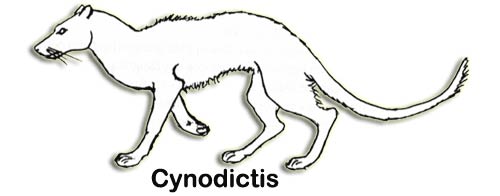How is your Dog’s Mind Activated?
February 2, 2008
“I believe that it is characteristic of the minds of dogs that they can think only about something that we activate in their minds: a ball, a leash, a few words, and the dog’s mind goes to work full steam. If everybody is busy with something else, the dog lies down, snoozes, and its mind just flickers at its lowest setting. I believe that dogs have taken the first step towards a more enduring wakefulness, and this is underscored by the fact that they easily learn rituals, because the elements of rituals assist in the activation of the mind. They have also developed a keen sense of time and it is easy to teach them a ritual that has to be carried out at a particular time.”
— from If Dogs Could Talk; Exploring the Canine Mind by Vilmos Csányi, translated by Richard E. Quandt, North Point Press, Farrar, Straus and Giroux, New York, NY, 2005. Originally published in 2000 by Vince Kiadó Kft., Hungary
Nazis, Jewish Prisoner of War and a stray dog
February 2, 2008
“Emmanuel Levinas, captured by the Germans in 1940 and sent to a forest work detail with other Jewish prisoners of war, realized that in the eyes of his guards, and even of passersby, he and his fellow prisoners no longer belonged to the human race. Then a stray dog came and joined them: ‘For the dog, there was no doubt we were men.’ ”
from The Difficulty of Being a Dog, by Roger Grenier (translated by Alice Kaplan), The University of Chicago Press, Chicago, 2000.
Maurice Maeterlinck on dogs
February 2, 2008
“Amid all the forms of life that surround us, not a single species , except for the dog, has made an alliance with us. . .He is the only living being that has found and recognizes an indubitable, tangible, unexceptionable, and definite god. He knows what to devote the best part of himself to. He knows who it is, above himself, the he gives himself to. He does not have to seek a perfect, superior and infinite power in the darkness, amid successive lives, hypotheses, and dreams.”
–Maurice Maeterlinck
from The Difficulty of Being a Dog, by Roger Grenier (translated by Alice Kaplan), The University of Chicago Press, Chicago, 2000.
Cynodictis, the ‘Dawn Dog’
January 28, 2008
Cynodictis, or “in-betwen dog” is the name given to a number of dog-like animals known from the late Eocene and early Oligocene of Europe (France and Germany), the late Eocene of Mongolia, and the Oligocene of North America (about 20~40 million years ago). The type species of Cynodictis, C. lacustris, is a member of the Amphicyonidae, but several fossil species that originally made up the genus have since been distributed among the genera Cormocyon, Cynarctoides, Phlaocyon, and Rhizocyon, all of which belong to the subfamily Borophaginae of the family Canidae.
Cynodictis are carnivorans that descended from Miacids, and are of the type that could be considered related descendants of a lineage that were ancestral progenitors of modern dogs, but their exact phylogenetic relationship is still not clear. Cynodictis may have given rise to two other species branches, one in Africa and the other in Eurasia. The Eurasian branch has been called Tomarctus.
Cynodictis had a long muzzle and a low-slung body. It had carnassial scissor teeth for slicing chunks of meat off carcasses. It lived on the grassy plains of North America, but researchers think it may have climbed trees in search of prey. It was about 30 cm in length – a small, carnivorous, dog-like mammal that could run very fast and dig efficiently. It used its speed to chase down rabbits and small rodents, but may also have been able to dig them out of their burrows. Cynodictis lived on open, emi-arid plains that were crisscrossed by rivers.
Using its digging skills, Cynodictis would make itself dens in steep riverbanks, which it would line with mouted fur and vegetation. In here the female Cynodictis would give birth to a litter of around five pups, which she would feed and protect for several months, suckling them at first, then later bringing them food. Unfortunately, the dens would sometimes be destroyed by flash floods that killed all the animals inside, but preserved them as fossils.
–from Wikipedia, Cynodictis

